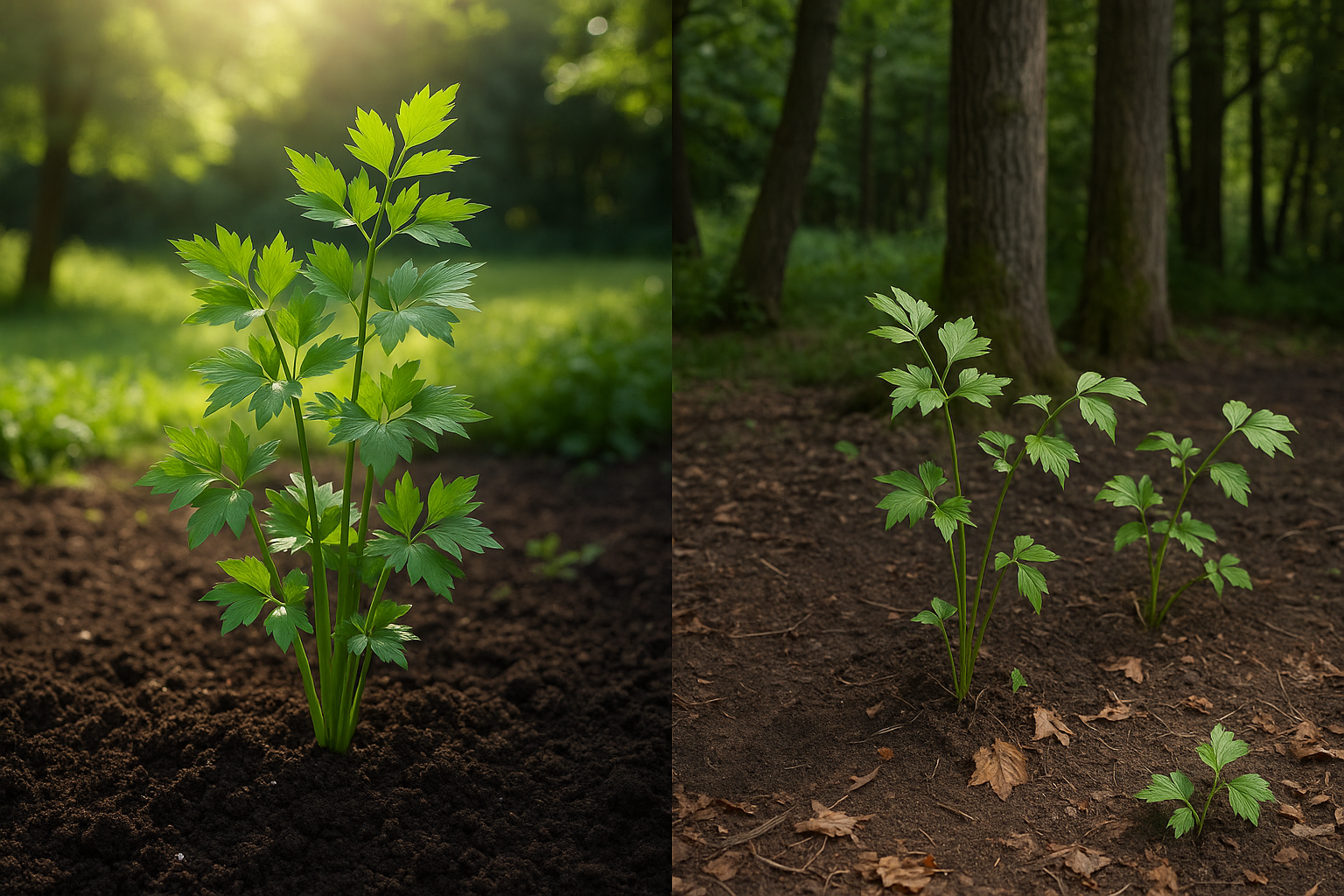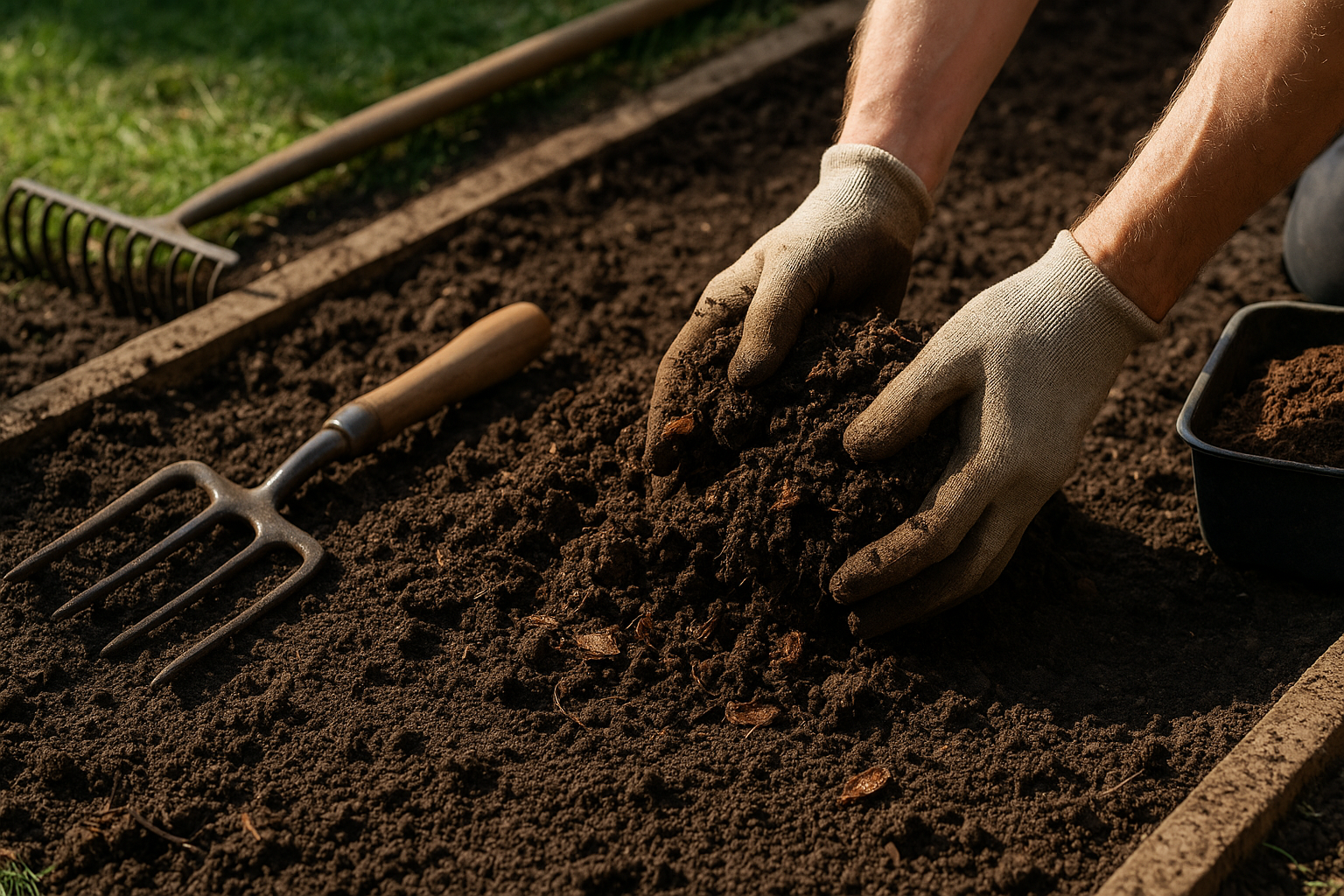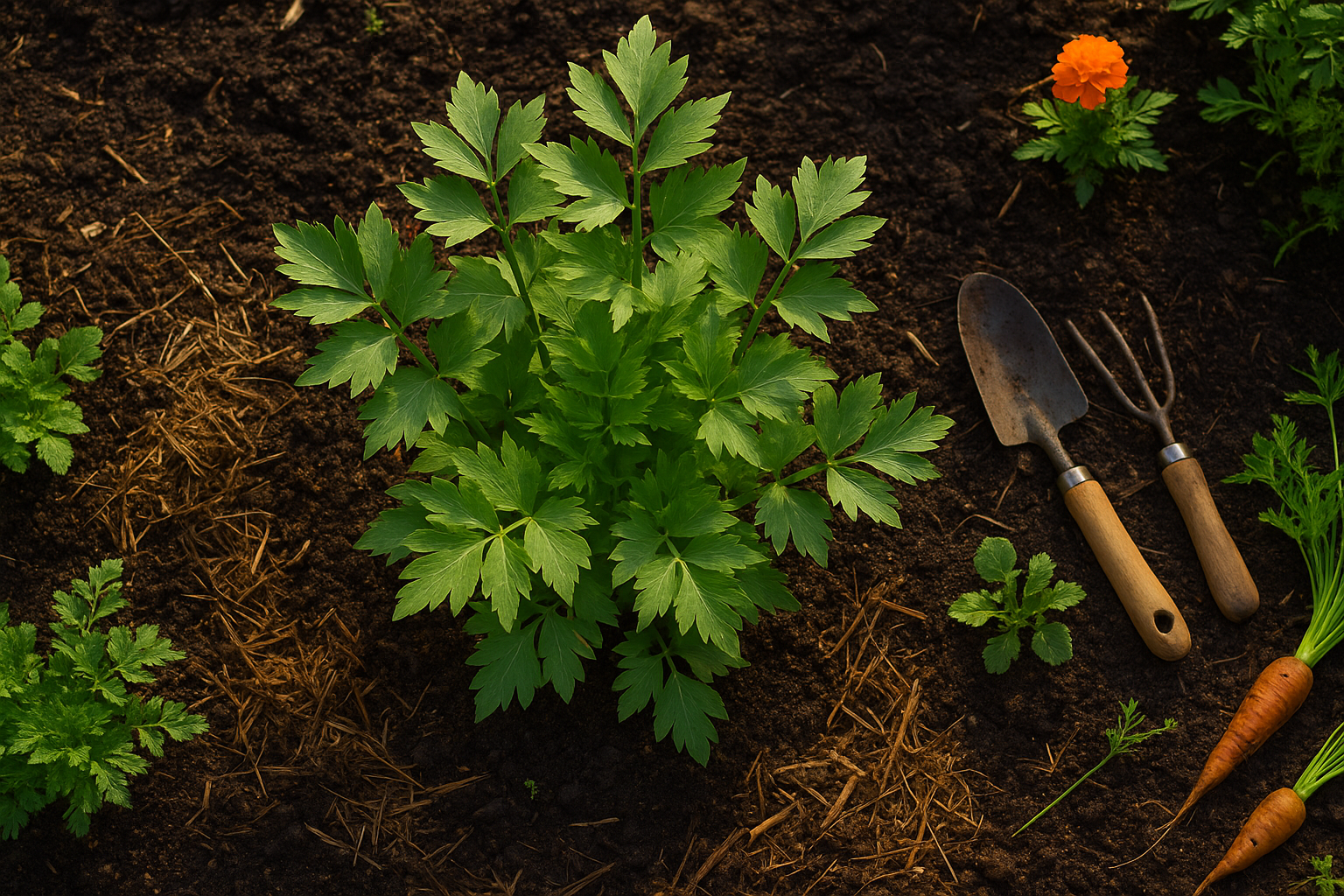Introduction
Lovage growing mistakes can quickly turn this aromatic, underrated herb from a garden gem into a source of frustration. Valued for its celery-like flavor and its robust presence in everything from soups to salads, lovage is a must-have for anyone looking to add unique depth to their kitchen or garden. Despite its hardy reputation, many gardeners stumble over avoidable pitfalls—like poor soil choices, incorrect spacing, or neglecting watering needs—that can stunt growth or even kill the plant.
In this post, you’ll learn exactly what not to do so your lovage grows strong and lush. We’ll walk through the most common errors, show you how to spot them early, and offer real-world tips for keeping this herb healthy year after year. With the right approach, you’ll be harvesting armfuls of lovage in no time—without the setbacks!
Choosing the Wrong Location

Choosing the right location for your lovage is crucial if you want a thriving, healthy plant. Lovage prefers a spot that gets full sun to partial shade—ideally, it should receive at least 6 hours of sunlight each day. If you plant lovage in deep shade, it will become leggy, produce fewer leaves, and may develop weaker stems that flop over.
Too little light also increases susceptibility to pests and diseases, as weak plants have a harder time defending themselves. In addition to light, spacing is key: leave at least 24 inches between plants to ensure plenty of airflow. Crowded lovage plants create a humid microclimate that encourages fungal problems and mildew, which can quickly destroy your harvest.
When picking a site, look for an open area with rich, well-draining soil away from dense shrubs or tall trees that cast heavy shadows. Avoid wet, low-lying spots and corners with poor circulation. A good trick is to stand in your garden at different times of day to see where the sunlight falls and how air moves—this helps you pick the best sun-drenched, breezy spot for your lovage bed.
If space is limited, consider growing lovage in a large container that you can move to track the sun and avoid overcrowding. These simple site selection strategies will give your lovage the strong foundation it needs to flourish.
Poor Soil Preparation

Lovage thrives when planted in rich, well-draining, moisture-retentive soil, so proper soil preparation is essential for healthy growth. If lovage is planted in compacted or clay-heavy soil, its roots will struggle to spread, resulting in stunted plants and slow growth. Similarly, sandy or rocky soil won’t hold enough nutrients or moisture, causing wilting and yellow leaves. Nutrient-poor soil leads to pale foliage and weak stems, making the plant more vulnerable to pests and disease.
To set your lovage up for success, start soil preparation a few weeks before planting. First, loosen the soil to at least 12 inches deep using a garden fork or tiller to break up compaction and improve drainage. Next, mix in generous amounts of compost or well-rotted manure—about two to four inches—directly into the top layer of soil. Adding organic matter not only boosts soil fertility but also helps retain moisture without waterlogging.
For extra poor or sandy areas, blend in a handful of leaf mold or peat moss to further enhance water retention. You can also test your soil’s pH: lovage grows best between 6.5 and 7.2, so adjust as needed with lime or sulfur. Finally, rake the bed smooth and remove any rocks or debris.
Well-prepared soil means less fuss with watering and feeding later, giving your lovage every chance to flourish from the start. If you skip these steps, you may find yourself battling weak growth and disappointing harvests all season long.
Over or Underwatering
Recognizing whether your plants are suffering from underwatering or overwatering is essential for healthy growth. Underwatered plants often have dry, brittle leaves, slow growth, and soil that pulls away from the pot’s edge. Overwatered plants, on the other hand, show yellowing leaves, wilting despite wet soil, and sometimes root rot.
Both problems can stunt plant health, but overwatering tends to be more fatal over time because it suffocates roots and promotes fungal disease.
To maintain the right moisture, adjust your watering habits seasonally:
- In hot, dry climates or during summer, check soil more frequently and water deeply so moisture reaches the roots.
- In cooler weather or humid climates, reduce watering so roots don’t sit in soggy soil.
Always water in the morning to allow leaves to dry and minimize fungal risks. Mulching with organic materials like straw or wood chips helps retain soil moisture and keeps temperatures stable, especially in summer.
For gardens or larger areas, consider drip irrigation or soaker hoses, which deliver water slowly at the root zone without waste. Check soil moisture by pressing a finger an inch into the soil—water only when it feels dry at that depth.
These practices will help keep your soil consistently moist without tipping into either extreme.
Ignoring Pest and Disease Threats
Overlooking pest and disease threats can quickly spell trouble for any garden. Common culprits like aphids and leaf miners can decimate tender leaves, while diseases such as root rot and powdery mildew silently sabotage plant health from the ground up. Proactive prevention is key:
Start by spacing your plants correctly to increase airflow, which helps keep fungal diseases at bay. Companion planting is another smart strategy; for instance, marigolds deter aphids naturally, and planting basil near tomatoes can ward off unwanted insects.
Regular inspections—just a quick glance under leaves and along stems every few days—can catch early signs of trouble. Tiny holes, discolored spots, or sticky residue often signal pests or disease. If you spot an issue, opt for safe treatments like insecticidal soap, neem oil, or even a gentle blast of water to dislodge pests without harming beneficial insects.
For diseases, remove and destroy affected leaves and avoid overhead watering to minimize moisture on the foliage. Ultimately, healthy, well-cared-for plants are far less attractive to pests and more resistant to infections, so don’t underestimate the power of proper watering, fertilizing, and mulching to protect your garden from the start.
Neglecting Regular Maintenance
Neglecting regular maintenance can quickly turn a healthy lovage patch into an unruly, less productive tangle. Harvesting stems and leaves regularly encourages bushier growth and prevents the plant from becoming leggy or excessively tall—an issue that often arises when lovage is left unchecked.
Pruning is just as crucial. Snip back any stems that begin to flower early in the season, as flowering signals the plant to slow its leafy growth. Removing dead or yellowing foliage throughout the growing season helps keep disease at bay and allows the plant to focus its energy on fresh, vibrant shoots.
In spring, thin out crowded lovage stalks to improve air circulation and help new growth flourish. In midsummer, a hard harvest can rejuvenate tired plants and prevent them from seeding too soon. Come autumn, cut back the dying stems close to the soil to prepare the plant for winter and reduce pest issues the following spring.
By savoring fresh lovage in your kitchen and spending a few minutes each week on upkeep, you’ll ensure your plants stay robust, vigorous, and full of flavor season after season.
Companion Planting Blunders
Companion planting is the practice of growing certain plants together to help each other thrive by deterring pests, improving growth, or saving space. Lovage is a tall, aromatic herb valued for attracting pollinators and beneficial insects, making it a fantastic companion in many gardens.
It grows especially well with vegetables like tomatoes, peas, and root crops such as carrots and potatoes, which benefit from its natural pest-repelling properties. However, lovage shouldn’t be placed near similar umbellifers like parsley or celery, as they attract the same pests and compete for nutrients, leading to poor growth for all.
When planning your garden, keep lovage in a sunny spot with plenty of space, as it can grow quite tall (up to six feet). Place low-growing crops around its base to take advantage of the light shade it provides, but leave at least eighteen inches between lovage and other large, heavy feeders to prevent root entanglement and competition.
Remember to rotate lovage’s location every few years and watch for signs of overcrowding. With these simple strategies, you’ll maintain a balanced garden and maximize the many benefits lovage brings.
Conclusion
Avoiding common lovage-growing mistakes—like overwatering, planting in poorly draining soil, or neglecting regular harvesting—can make a big difference in your herb garden’s success. Remember, lovage thrives with a little attention: check the soil often, trim it back to encourage fresh growth, and watch out for pests or diseases.
By being proactive and caring, you’ll keep your lovage healthy and productive for many seasons. Have you encountered any challenges growing lovage, or do you have tried-and-true tips? Share your experiences or questions in the comments—we’d love to hear from you!
